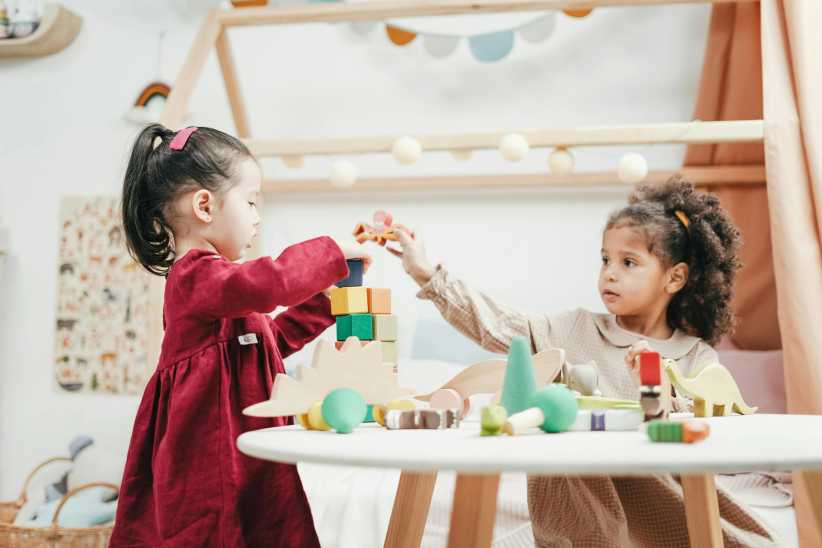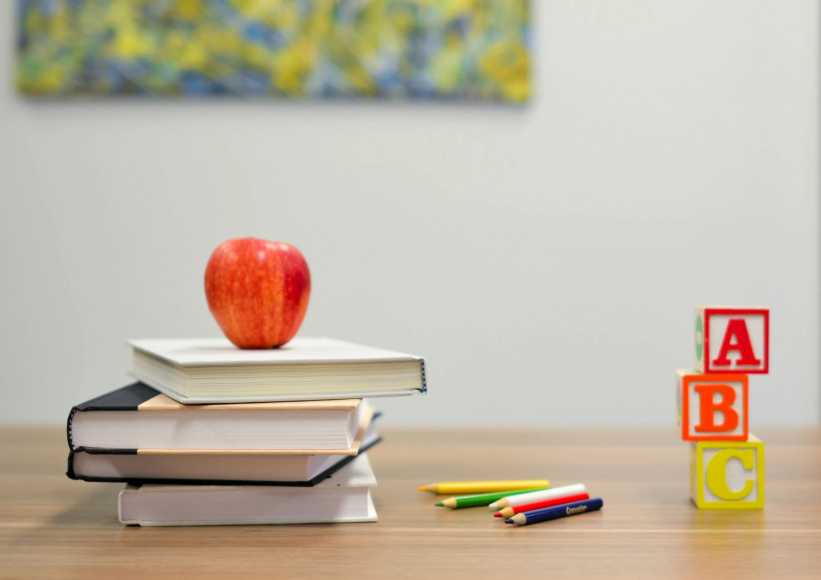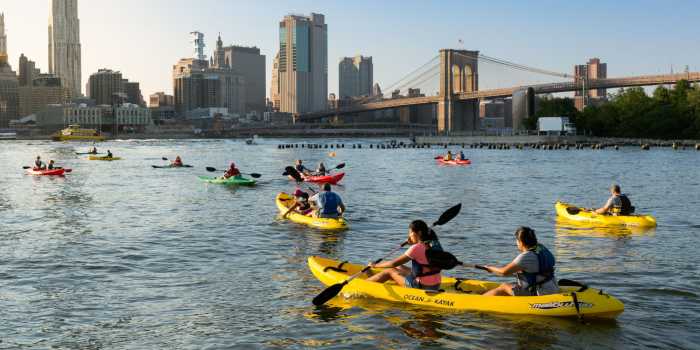This past fall, I enrolled my 5-year-old daughter in kindergarten at PS 196, an elementary school in our Forest Hills, Queens, neighborhood. It was in an area of Forest Hills that I wasn’t well acquainted with. When I dropped my daughter off for her first day of school, I noticed that almost half of the students walking into the school were Asian-American. I heard a lot of kids speaking Chinese with their parents, and I also observed kids of other Asian nationalities, including Filipino, Indian, Pakistani, Korean, and Japanese.
At the end of the first week of school, one of the parents in my daughter’s class invited all the students and their parents to her home for lunch. During lunch, I realized most of the parents were Asian-American, and they were discussing where they were sending their kids for Chinese and karate classes in Flushing on Saturdays.
By the second week of school, my daughter came home and told me she wanted me to make her rice for lunch. I asked her how she could eat just rice for lunch, but she insisted that all the kids at her lunch table at school were eating rice for lunch. I looked at her dubiously, but eventually compromised by throwing some protein into a rice bowl just to reassure myself she had enough energy to get through the day.
After the first month of school, my daughter came home with her class photo. As I looked at the photo of the teacher and the 24 students in the class, I realized that nearly 50 percent of the students looked like they had at least one parent of Asian descent.
When Halloween came around, I finally got to visit my daughter’s classroom and help out at the class party. Since the student-to-teacher ratio in the class was 24 to one, I was expecting to see kids running amok during the party. Instead, the students followed instruction so well that the teacher was able to sit at her desk and eat lunch while the kids ate at their own desks.
Asian pop increasing
Intrigued by this new-to-me culture, I started to research the most recent U.S. immigration data. According to the 2010 U.S. census statistics, Asians are the ethnic group with the largest population increase in the U.S. within the past decade.
From 2000 to 2010, Asian immigration has grown 43.3 percent in the U.S., and Asians now comprise 4.8 percent of the country’s population. The greatest increase of Asian immigrants has been in U.S. cities, such as New York City, where various Asian communities now account for 13 percent of the city’s total population. More specifically, the Asian population increased in Queens by 57.4 percent during this decade.
After analyzing the 2010 census results, the Asian American Federation determined that the largest Asian ethnicities in New York City are Chinese, Indian and Korean. For the first time ever, more Chinese, compromising 47 percent of the Asian population, live in Flushing than in Chinatown. Fifteen percent of Indians reside in South Ozone Park and Richmond Hill, while a fourth of the Koreans call Flushing, Bayside and Murray Hill their home.
Interestingly enough, when I researched the top public elementary schools in New York City that had the highest test scores on the 2011 New York State assessment tests, I discovered that six of those in Queens are located in predominately Asian neighborhoods. One of these schools is located in Flushing, four are based in Bayside, and toward the top of the list was PS 196, with its own burgeoning Asian community.
Following the regulations of Congress’s No Child Left Behind Act, each year, every public school must administer a state assessment test to ensure its pupils are performing at a certain academic level. At the elementary school level, students in grades three through five are tested in English language arts and mathematics. Children in the fourth grade are also tested in science.
More Asian students, better test scores
When I looked at PS 196’s state assessment test scores from 2008 to 2010, I analyzed the data based on ethnicity. During those three school years, the student Asian population at PS 196 had slowly increased from 39 percent to 43 percent, and during this time, Asian-American students had scored higher in all three categories — English, mathematics and science — than any other ethnic group.
Looking at the data trends through the past three years, I also noticed that the scores of the Asian-American students had also slowly increased in most of the subjects. Thus, I easily made the correlation that as PS 196 admitted more Asian-American students each year, the school’s test scores also increased.
From my conversations with the parents of these Asian-American students, I’ve been able to make some general observations about their views toward their children’s upbringing and education. Many of these Asian-American parents originally came to the U.S. to either study at universities or work at multinational companies. They were able to keep their residencies here either through their jobs or by marrying an American citizen.
The Asian perspective
I informed all of these Asian-American parents about the controversial publication of Amy Chua’s controversial 2011 book, “The Battle Hymn of the Tiger Mother.” Chua, a professor at Yale Law School, describes in her book how she raises her two daughters according to child-rearing philosophies of Chinese and other Asian cultures. Not only does she forbid her daughters to watch television or play computer games, she does not allow them to have playdates or sleepovers, receive any grade less than an A, or choose their own extracurricular activities.
All of the Asian-American parents at PS 196 expressed disapproval at some aspects of Chua’s Eastern parenting philosophy, but they also admitted to disliking certain Western methods of raising children. For example, one Chinese father told me he thought that Americans gave their children “too much praise,” instead of providing them with honest, critical feedback that, in his opinion, would compel them to perform better.
Another Chinese mother told me she thought that Americans “complain too much” in public, as the Chinese must comply with the laws of their communist government and not outwardly emote their opposition to it. The same Chinese mother went further to say that she thought Americans can sometimes be too outspoken and “not think about other people’s feelings” when they voice their opinions.
Since Chinese and Asian children are brought up to never publicly question authority figures, I thought that this could partly explain (besides PS 196 being a very good school) why my daughter’s peers were so well-behaved in the classroom.
Despite their criticism of American culture, these Asian-American parents did not recount with fondness their own educational experiences growing up in their native countries. They complained that the competition in the schools was too fierce, educators placed too much emphasis on test scores, and students didn’t have much freedom to choose what they wanted to study.
A lot of these Asian-American parents said they preferred the more westernized U.S. educational system, because it looks at students’ performances in a variety of classes — not just their test scores. One mother informed me that math in China is taught at more advanced levels than in the U.S., but she still thought the students there endure too much pressure to achieve high test scores and attend elite universities.
Reverse trend
Some of these Asian-American parents also observed a reverse trend between Eastern and Western teaching philosophies. One father told me that he thought that the Chinese were adopting a more “relaxed” attitude toward teaching, while the U.S. had recently been placing more importance on test scores.
Unlike their own upbringings, some of these Asian-American parents said they don’t want to force their children to participate in activities they don’t enjoy. One mother recounted to me that as a child, she and her siblings were obligated to take piano or violin lessons. However, she insisted that now, if her own children don’t wish to study music, she will not push them to take classes.
Tight-knit families
All of the Asian-American families admit to missing their families back in their native countries where most children live with their parents until they are married. The only exceptions to this tradition are when children need to leave home to study at a school or take a job. Because of this familial bond, it is not uncommon for grandparents to assist their children in raising their grandchildren.
In my own neighborhood in Forest Hills, I have seen many Chinese grandparents taking care of their grandchildren. Most of them come from China and stay with their children for months at a time until their visas expire. Some Asian-American parents have even made efforts to have their parents move to the U.S. to live with them permanently.
Under the Asian influence
As the U.S. economy has become more reliant upon Chinese investments to sustain itself, Asian immigration will undoubtedly be rising for years to come. If PS 196 and other New York City public schools are any indication of what the U.S. educational system will be like in the future, our schools will be challenged to perform to a higher standard.
Foreshadowing this future, one parent recounted to me that one morning a school bus was late picking up his daughter and other children to take them to PS 196. When the bus was 10 minutes late, the Asian-American parents started to walk with their children to school, so they would not arrive late.
The parent confided to me that he was planning on continuing to wait for the bus, but embarrassed by this decision, he decided to follow the Asian-American parents and walk his daughter to school, too. Soon, he saw all the other parents following the Asian-American parents in walking their children to school.
As the parent observed, “It was very telling.”
Allison Plitt is a contributing writer for New York Parenting Media and a mother living in Queens with a 5-year-old daughter. If you have any ideas you’d like to share with her about topics for articles or resources for families, please contact her at allisonplitt@hotmail.com.






















